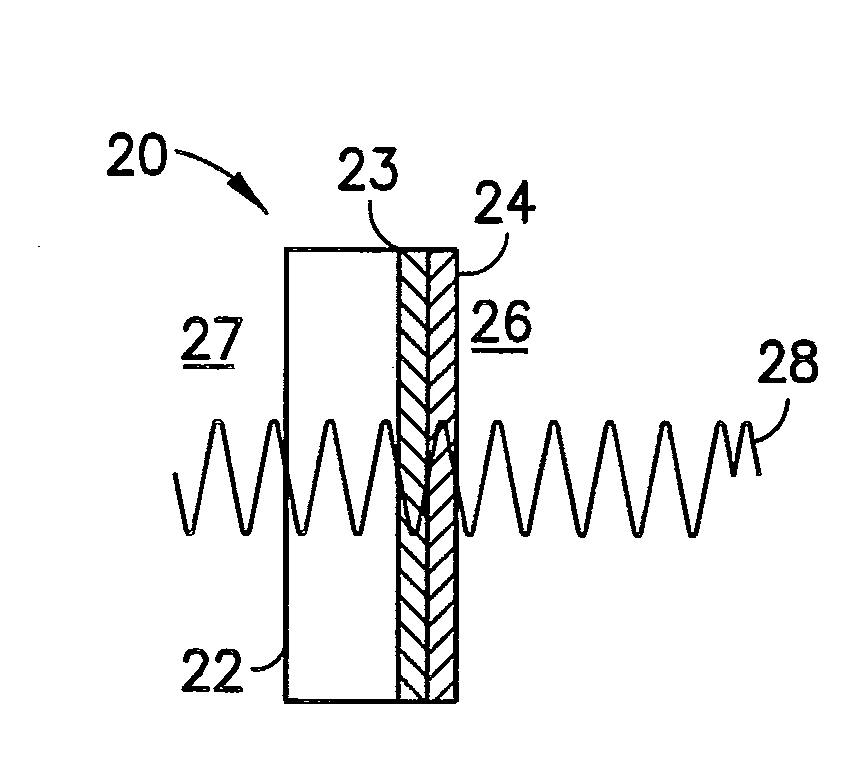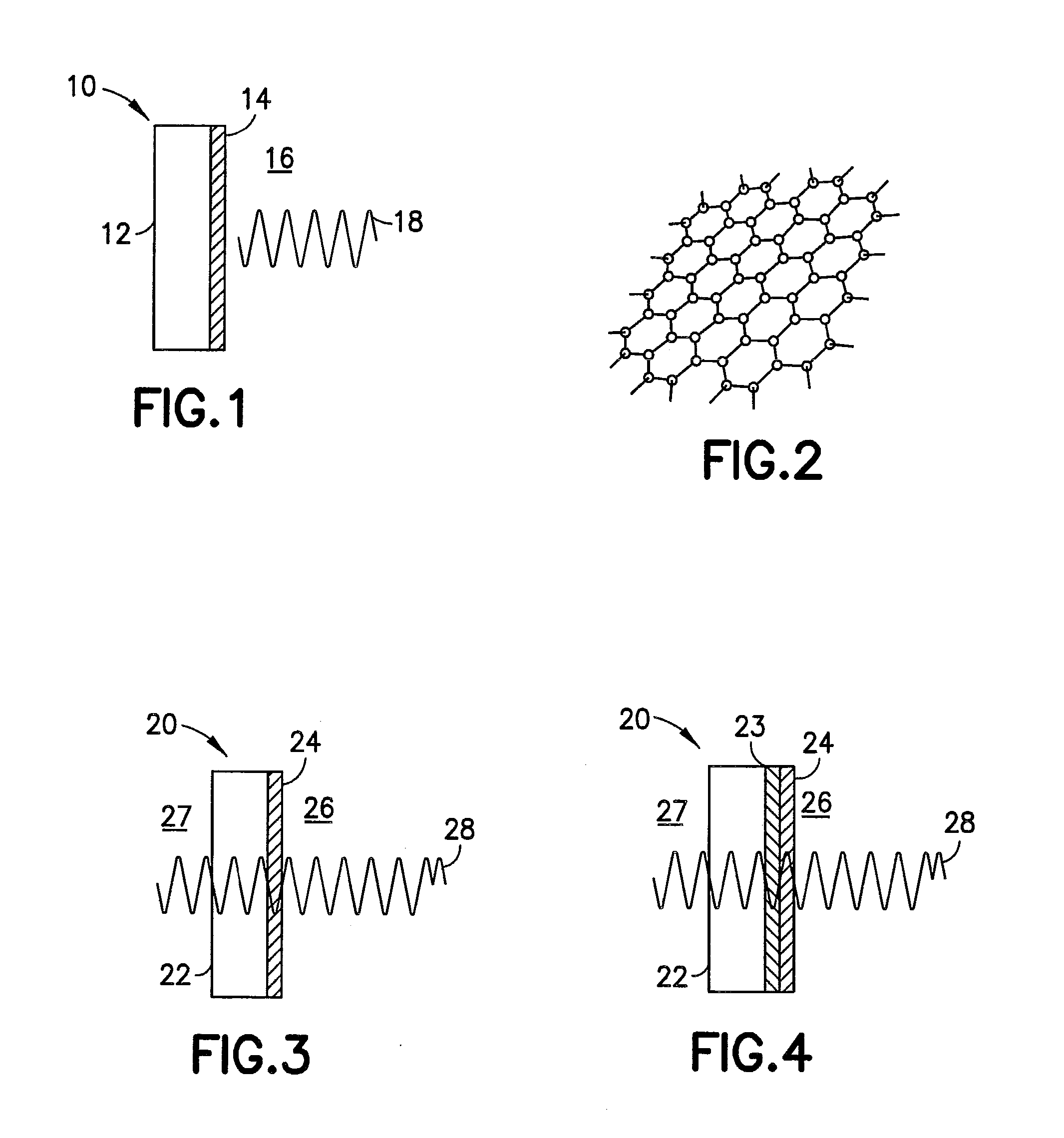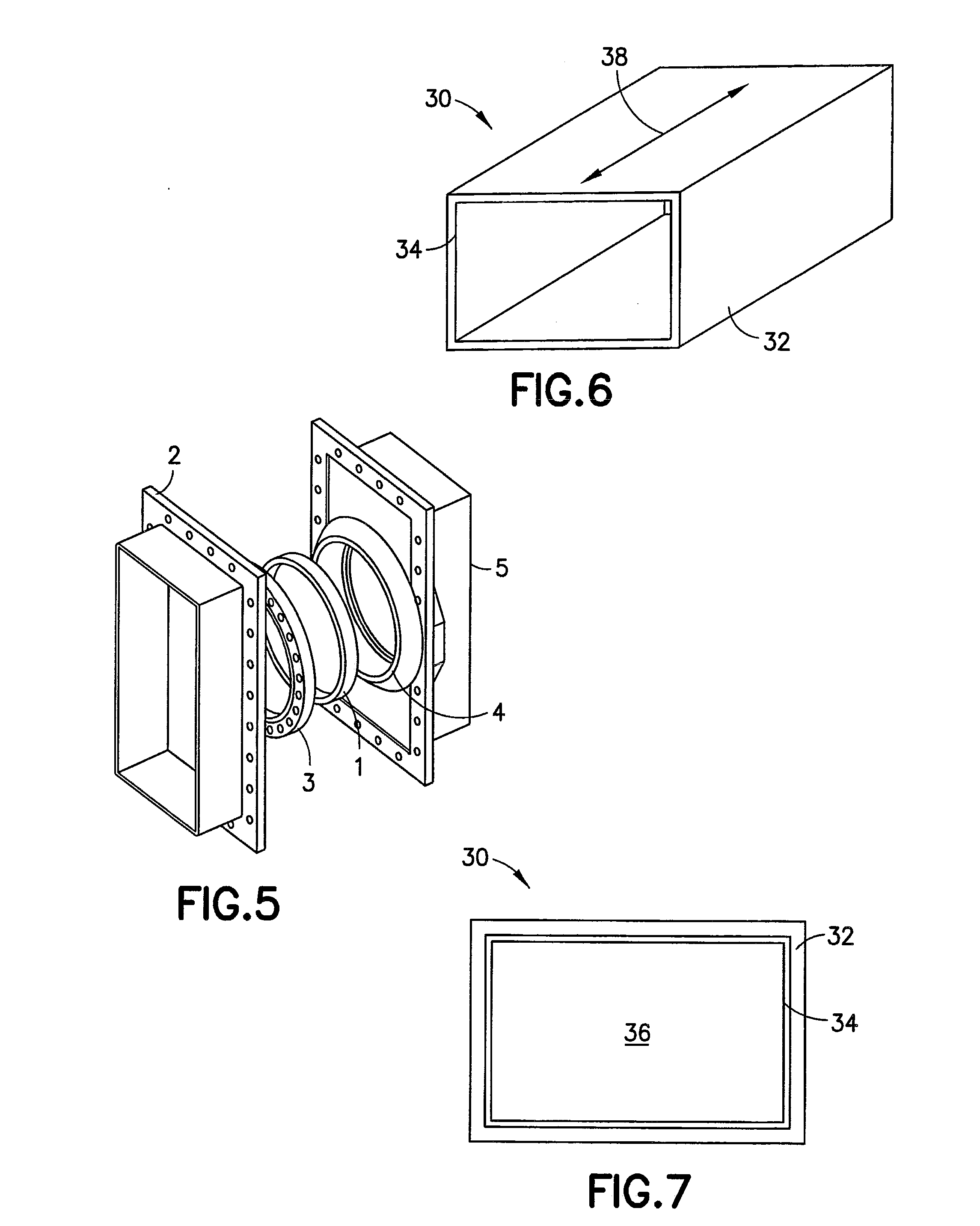Component having a multipactor-inhibiting carbon nanofilm thereon, apparatus including the component, and methods of manufacturing and using the component
a carbon nanofilm, multi-pactor technology, applied in the manufacture of transit tubes/containers, electrode systems, electric discharge tubes/lamps, etc., can solve the problems of reducing overall performance, multi-pactor flashover events at relatively low field strengths, and avalanche of electrons that damage or destroy components of high-power rf energy devices, etc., to improve the reliability of components, reduce electromagnetic energy transmission, and improve the effect of reliability
- Summary
- Abstract
- Description
- Claims
- Application Information
AI Technical Summary
Benefits of technology
Problems solved by technology
Method used
Image
Examples
first embodiment
[0073]FIG. 1 illustrates a representation of a component 10 according to a first embodiment. The component 10 includes a multipactor-inhibiting carbon nanofilm 14 covering at least one surface 12 of the component 10, wherein a SEE coefficient of the multipactor inhibiting carbon nanofilm 14 is less than a SEE coefficient of the underlying surface 12 of the component 10 and, preferably, less than a SEE coefficient of conventional multipactor-inhibiting TiN coatings, which is approximately 1.5. In addition to the low SEE coefficient, the multipactor-inhibiting carbon nanofilm 14 has a low loss tangent to limit losses and overheating, and mechanical properties sufficient to handle extreme heating cycles under an applied vacuum load.
[0074]Since the SEE coefficient is a surface-sensitive property, the susceptibility of the component 10 to multipactor flashover will be controlled by the multipactor-inhibiting carbon nanofilm 14 rather than the underlying surface 12 of the component 10 if ...
second embodiment
[0082]The RF / microwave community has long identified RF windows as a major fault point, with frequent failure events due to multipactor flashover, putting a low upper limit on practical operating ranges. To address this need, the second embodiment is directed to improved RF windows having multipactor-inhibiting carbon nanofilms thereon.
[0083]FIG. 3 illustrates a representation of an RF window 20 according to the second embodiment. An RF window is a conventional component of a high power RF (Radio Frequency) energy device, such as plasma sources, high power microwave devices and particle accelerating devices that require isolated vacuum environments in order to operate. Radio Frequency electron beam accelerators, klystrons, and magnetrons are all believed to require RF windows. As represented in FIG. 3, the RF window 20 includes a microwave transparent material 22 and a multipactor-inhibiting carbon nanofilm 24 covering at least one surface of the microwave transparent material 22.
[0...
third embodiment
[0091]The RF / microwave community has also long strived to increase the power handling capability of waveguides in a vacuum. Waveguides for a high power RF energy device are typically used to channel energy and to filter frequencies. Many RF electron beam accelerators, klystrons, and magnetrons require such a waveguide. In order to guide energy generated from high power RF energy devices, waveguides include cavities that are put under a vacuum and exposed to high microwave energy. To address this need, the third embodiment is directed to improved waveguides having multipactor-inhibiting carbon nanofilms thereon.
[0092]As referenced herein, the term waveguide is used to include one or more structures that include one or more surfaces defining at least one cavity through which high power RF energy is guided. As shown in FIGS. 6 and 7, an illustrated waveguide 30 includes a plurality of surfaces 32 defining a cavity 36 through which high power RF energy is guided along a waveguide axis d...
PUM
| Property | Measurement | Unit |
|---|---|---|
| Thickness | aaaaa | aaaaa |
| Thickness | aaaaa | aaaaa |
| Thickness | aaaaa | aaaaa |
Abstract
Description
Claims
Application Information
 Login to View More
Login to View More - R&D
- Intellectual Property
- Life Sciences
- Materials
- Tech Scout
- Unparalleled Data Quality
- Higher Quality Content
- 60% Fewer Hallucinations
Browse by: Latest US Patents, China's latest patents, Technical Efficacy Thesaurus, Application Domain, Technology Topic, Popular Technical Reports.
© 2025 PatSnap. All rights reserved.Legal|Privacy policy|Modern Slavery Act Transparency Statement|Sitemap|About US| Contact US: help@patsnap.com



